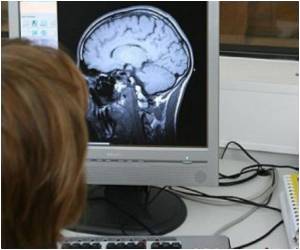 Researchers say that Albert Einstein's brain, which was of average size, contained an unusually high number of folds that may have provided him with the ability to think in "extraordinary ways".
Researchers say that Albert Einstein's brain, which was of average size, contained an unusually high number of folds that may have provided him with the ability to think in "extraordinary ways". Although the Nobel Prize winner's brain was divided into 240 blocks and distributed to researchers after his death in 1955, most of the specimens were lost and little was written about its anatomy.
Now scientists have used photographs of the brain before it was segmented to produce a "road map" connecting the 240 sections and the 2,000 thin slivers into which they were later split.
The photographs, taken from the private collection of Thomas Harvey, the pathologist who divided the brain up, reveal a number of peculiarities about Einstein's brain.
A comparison with 85 other brains showed that although the great scientist's brain was only of average size, weighing 1,230 grams, certain areas contains an unusually high number of folds and grooves.
In each of the brain's lobes, anthropologist Dean Falk of Florida State University found "regions that are exceptionally complicated in their convolutions."
The finding confirmed reports in two previous papers, which suggested that an unusual pattern of ridges in the brain could have been linked to Einstein's remarkable ability to solve problems in physics, but which were based only on a handful of images.
Falk and colleagues also observed that Einstein's brain was enlarged in regions which transmit nerve impulses to the face and tongue, and in the prefrontal cortex, which is linked to concentration and forward planning.
The extra matter in areas linked to the face and tongue could explain a comment by the scientist that his thinking was "muscular" rather than taking the form of words.
"It may be that he used his motor cortex in extraordinary ways," the Telegraph quoted the researchers as saying.
As well as using the photographs to examine the brain, the team were also able to map out the 240 brain sections in the hope that other scientists could use them for future projects.
"What's great about this paper is that it puts down ... the entire anatomy of Einstein's brain in great detail," Albert Galaburda, a Harvard Medical School neuroscientist, told the Science journal.
The findings of the study have been published in the journal Brain.
Source-ANI


No comments:
Post a Comment